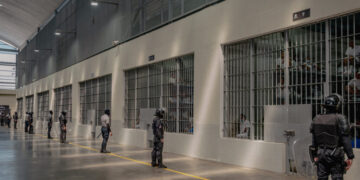Agriculture Department Shed a Fifth of Its Workers
The Agriculture Department lost nearly one-fifth of its work force in the first half of this year, according to a...
The shattering sadness of 2025 is over — as this slumbering anti-Trump giant awakes
Trump calls it “Trump Derangement Syndrome.” I have a more accurate description: our political trauma. After almost a year of...
The internet can’t decide what’s better: A $240,000 in-office job or a $120,000 fully remote one
Social media has been buzzing as people weigh in on which job they'd choose: A $240K fully in-office position or...
This new luxury airline seeks to go well above first class without the enormous cost of a private jet and will only fly to a handful of cities
As premium travel becomes an increasingly important part of the airline industry, a new carrier is launching that looks to...
With Spotify’s Library Plundered, the Door Is Open for Music Preservation, but Also for AI Companies
An extreme amount of metadata from Spotify’s music library has been scraped by pirate activists as of December 2025, according...
Brown Shooter’s Friend Offers Possible Explanation for Massacre
Claudio Neves Valente’s self-described “only friend” at Brown University said he thinks he knows the shooter’s possible motive. “I’m speculating...
Bari Weiss Throws Gas on ‘60 Minutes’ Firestorm in Call With Angry Staff
The new MAGA-curious boss at CBS News lectured her angry staffers in a call Monday morning after pulling a 60...
‘Midst of a coverup’: Trump accused of building web of lies so complex aides keep tripping
The Trump administration has crashed out over the newly released Jeffrey Epstein files — and can no longer keep its...
James Ransone poses with ‘Poker Face’ star Natasha Lyonne in final photo before his tragic death
James Ransone was hard at work months before his tragic death. Ransone, who was most famous for his role in...
Exes Jennifer Lopez and Ben Affleck reunite for holiday shopping trip with his son, Samuel
Exes Jennifer Lopez and Ben Affleck reunited for holiday shopping and lunch with his son, Samuel, at the Brentwood Country...














